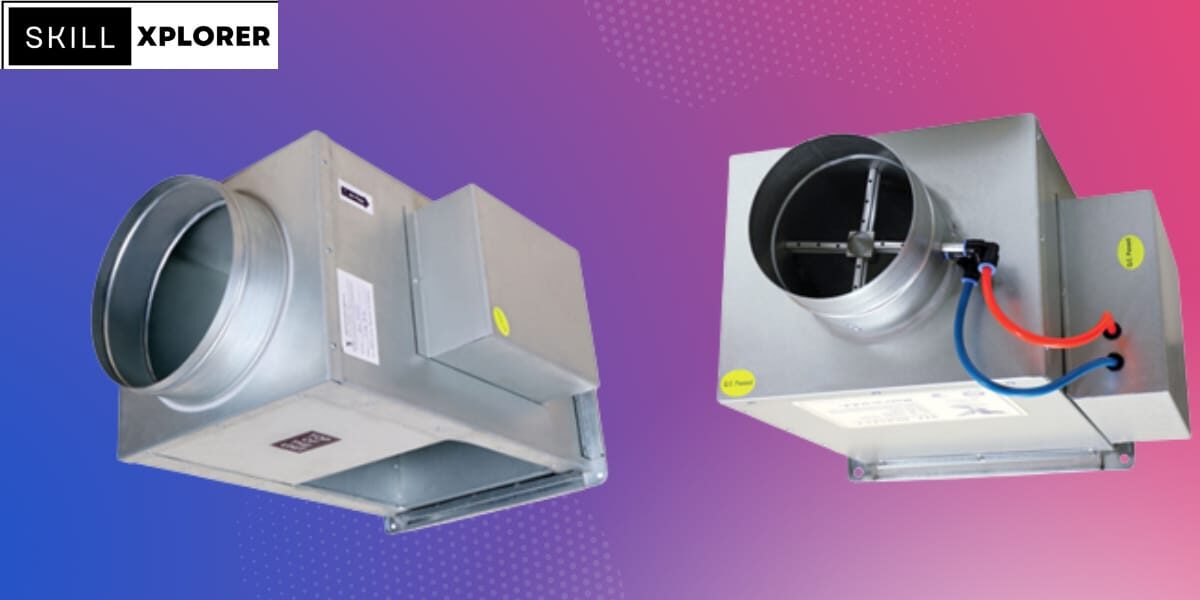In this article, we will explore the Variable Air Volume (VAV) in HVAC and working principal, understanding what it is and its function. This knowledge will provide a foundation for comprehending the basics of HVAC system and its operational principles.
What is VAV in HVAC?
Variable Air Volume (VAV) is part of Heating Ventilation and Air Conditioning (HVAC) system that regulates the volume of air flow conditioned air into the space based on specific needs of that space.
It’s commonly using in commercial and institutional building to provide individual control over dedicated space. A VAV is distributed supply Air through a network of ducts.

Variable Air Volume (VAV) Box?
- Damper: The primary purpose of the damper in a VAV system is to regulate the volume of air entering a specific area and maintain the desired temperature or ventilation rate. By adjusting the position of the damper, the airflow can be increased or decreased
- Heating Coil: In VAV electric heating coil is optional, its using in colder region. A heating coil in a VAV system is a component that utilizes hot water or steam to add heat to the supply air. Its usage is typically limited to colder regions or colder seasons when heating is necessary to maintain comfort.
- Controller: VAV controllers help optimize energy efficiency and maintain comfortable conditions throughout the building, modulates the damper.
- Air flow station: Its measure accurate air flow, better control, less temperature variations and energy saving.
Types of Variable Air Volume (VAV)?
- Pressure independent controller system.
- Pressure dependent control system.
1. Pressure Independent Control System in vav?
A Pressure Independent Variable Air Volume (PI-VAV) system utilizes a specialized controller to maintain a consistent airflow volume irrespective of variations in the supply air pressure. This is achieved by employing a combination of airflow sensors, pressure sensors, and control and regulate the position of the VAV box damper. The PI-VAV system ensures a uniform air volume distribution to each area, resulting in improved air balancing, enhanced occupant comfort, and increased energy efficiency. By decoupling airflow control from supply pressure fluctuations, PI-VAV systems provide these benefits.
2. Pressure Dependent Control Valve?
A Pressure Dependent Variable Air Volume (PD-VAV) system is a type of VAV system where the airflow volume is directly dependent on the supply air pressure. In a PD-VAV system, the VAV box damper position is adjusted based on changes in the supply air pressure to regulate the airflow. The airflow volume varies as the pressure changes, which can impact air balancing and occupant comfort.
Thank you




